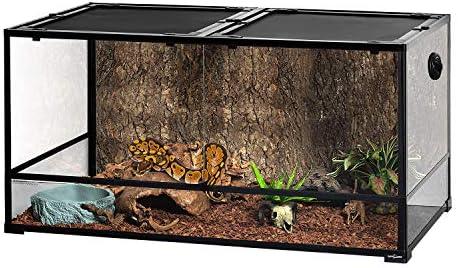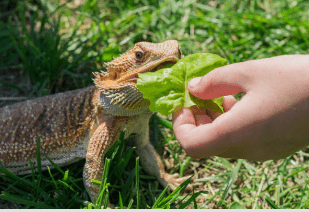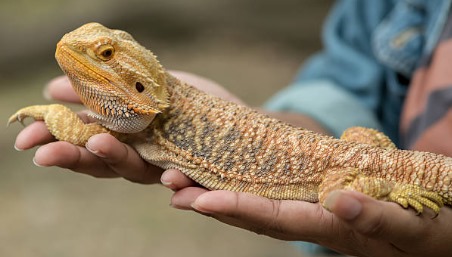Ever stumbled upon the term “dunner bearded dragon” and wondered what that meant? You’re not alone.
Having extensively researched and interacted with various reptilian species, I bring a wealth of knowledge to this particular creature.
Bearded dragon dunners are fascinating, and by the end of this article, you’ll not only grasp their essence but also appreciate their uniqueness.
Table of Contents
Unveiling the Mysteries of Dunner Bearded Dragons
It’s crucial to lay a foundation before diving deep into the intricacies of dunner bearded dragons. This section sheds light on the origins and the science behind these extraordinary reptiles.
Origins and Background
A journey to discover the roots of any species is always exhilarating. Let’s embark on one to understand where dunner bearded dragons come from and the genetics that set them apart.
Where Did Dunner Bearded Dragons Come From?
The history and evolution of these creatures are entwined with tales of nature’s play and human interventions.
The Dunner Gene Explained
Understanding the Dunner gene is akin to unraveling a biological puzzle. We’ll delve into the science of it all.
Comparing Dunner and Regular Bearded Dragons
While all bearded dragons are captivating, a distinction often intrigues many – the difference between the dunner bearded dragon and the regular one. This section offers a comprehensive comparison, spotlighting the unique features and behaviors that differentiate these two.
Physical Characteristics
Whether you’re a potential pet owner or just an enthusiast, it’s vital to recognize the physical differences. From scales to posture, the distinctions, though subtle, are significant.
Behavior and Temperament
Just as humans have varied personalities, so do these reptiles. It’s not just about their appearance; their behavior and temperament can also differ vastly. Understanding these nuances can be key, especially if you’re considering bringing one into your home.
| Features | Dunner Bearded Dragon | Regular Bearded Dragon |
| Scale Pattern | Typically more “rugged” and randomized | Regular, aligned pattern |
| Size & Posture | It might have slight variations | Standard posture and size |
| Color Variations | More vibrant due to genetic factors | Standard shades, less variability |
| Behavioral Distinctiveness | It might display unique activities not common to regulars | Standard behaviors common to bearded dragons |
| Interaction with Humans | Can differ based on individual temperament | Generally predictable, based on common bearded behaviors |
Physical Attributes of Dunner Bearded Dragons
Dunner bearded dragons are not merely defined by their behavior but also by their distinct physical features. Let’s dive deep into these attributes that set them apart.
Scale Patterns
The allure of the dunner bearded dragon often lies in its unique scale configuration. This isn’t just a superficial distinction but speaks volumes about their genetics.
The Unique “Rugged” Appearance
Unlike regular bearded dragons, dunners possess a ‘rugged’ look. Their scales lack the alignment seen in other breeds, giving them an unmistakable, intriguing, and captivating appearance.
How It Differs From Other Bearded Dragons
Regular bearded dragons typically display an orderly scale pattern. In contrast, the dunner bearded dragon boasts a randomized scale layout, rendering each individual truly unique.
Color Variations
Color plays a significant role in differentiating dunners from their counterparts. The palette nature endowed them with is truly a sight to behold.
Common Colors Found in Dunner Bearded Dragons
From vibrant hues to muted tones, dunners can showcase a myriad of colors. These shades, often more vivid than their regular counterparts, add to their allure.
The Role of Genetics
The diverse color spectrum seen in dunner bearded dragons isn’t mere chance. Genetics play a pivotal role, with the Dunner gene influencing the vibrancy and range of their colorations.
The Dunner Foot Phenomenon
Ever noticed the unique foot structure of the dunners? There’s more to it than meets the eye.
Foot Size and Shape
Dunner bearded dragons often sport slightly longer toes, making their feet distinct. This characteristic isn’t just for show but has functional benefits as well.
Functional Benefits of Longer Toes
These elongated toes aren’t mere aesthetic quirks. They aid in climbing and grasping, offering the dunners a slight advantage in certain terrains.
Personality Traits: What Makes Dunners Special
In the vast reptilian world, the dunner bearded dragon captivates with unique behaviors and interactions.
Social Behavior and Compatibility
How does a bearded dragon dunner mingle with its own kind and humans? Their dynamics can be varied. Some dunners coexist peacefully with fellow dragons, while others showcase a territorial streak.
Interaction with Other Bearded Dragons
While many revel in shared spaces, certain dunners prefer dominance, underscoring the need for attentive observation during cohabitation.
Interaction with Humans
Each dunner bearded dragon is an individual. Some seek the warmth of human touch, climbing onto their caregivers, while others observe life from a distance, showcasing their reserved nature.
Unique Behavioral Patterns
Beyond their social interactions, what is a dunner bearded dragon known for? Their distinct lifestyle and stress indicators.
The Dunner’s Lifestyle and Activities
These creatures are often surprised with unique behaviors. Whether it’s an unusual digging routine or a particular resting pose, dunners are a continuous source of fascination.
Stress Indicators in Dunners
A color change, swift breathing, or unexpected movements signal stress in dunners, highlighting the importance of understanding and catering to their well-being.
A Comprehensive Care Guide for Dunner Bearded Dragons
Just as with any pet, ensuring their well-being requires knowledge and dedication. This guide aims to provide a holistic perspective on caring for these magnificent creatures, ensuring they thrive in captivity.
Habitat Requirements
The habitat is the canvas upon which your dragon’s life will unfold. It’s more than just an enclosure; it’s a simulated environment that should echo the natural surroundings of the dunner bearded dragon.

Ideal Tank Conditions
Size matters! For a juvenile dunner, a 20-gallon tank might suffice. However, as they grow, they’ll need more space – a minimum of a 40-gallon tank for an adult.
The tank should have a gradient of temperatures, ensuring they can bask in the warmth or retreat to a cooler spot as they please. Ventilation is crucial, and the substrate should be safe, like reptile carpet or tiles, to prevent ingestion and related complications.
Heating, Temperature, and Humidity
Dunners, like all reptiles, are ectothermic. This means they rely on external heat sources. A basking light is essential, providing a warm spot where temperatures hover around 95-105°F. The cooler end of the tank should be around 80-85°F.
Nighttime temperatures can drop a bit but should remain above 70°F. Humidity levels should be moderate, around 30-40%, with occasional misting to simulate their natural habitat.
Feeding and Nutrition
Feeding is more than just providing sustenance. It’s about ensuring a balanced diet that caters to their nutritional needs, ensuring growth, health, and vitality.
Recommended Diet
A varied diet is the key. Juvenile dunners are primarily insectivores, relishing crickets, mealworms, and roaches. Their diet should include more greens like collard, mustard greens, and dandelion leaves as they mature.
An occasional treat of fruits like berries can also be included. Ensure all food items are appropriately sized to prevent choking.

Foods to Avoid
Just as there are foods they love, some can be harmful. Avoid feeding them lettuce (lacks nutrition), avocados (toxic), and large insects with hard exoskeletons that might be difficult to digest.
Health and Well-being
The well-being of your dunner bearded dragon is about more than just a good diet and habitat. Regular health checks and being observant can prevent potential issues.
Common Health Issues in Dunners
Like all pets, dunners are susceptible to certain health problems. These might include metabolic bone disease (due to calcium deficiency), respiratory infections, and impaction.
Regular vet visits and being attuned to changes in their behavior or appearance can ensure early detection and treatment.
Preventive Measures
Prevention is better than cure. Ensure the habitat is clean, provide UVB lighting to assist in vitamin D synthesis, and maintain a balanced diet. Regularly check for signs of stress or illness and consult with a vet specializing in reptiles for periodic health checks.
Breeding Dunner Bearded Dragons
Breeding is an essential aspect of the reptile hobby and, for many enthusiasts, represents an opportunity to understand further and appreciate the species. When it comes to the dunner bearded dragon, the breeding process combines both challenges and rewards, ensuring a rich learning experience.
The Breeding Process
Successfully breeding dunner bearded dragons requires a mix of preparation, understanding, and a touch of patience.
Preparing for Breeding
Before introducing two dragons, it’s crucial to ensure they’re healthy. A vet check is advisable. Additionally, setting the mood is key. This includes adjusting light cycles to mimic seasonal changes and ensuring the habitat is aptly conditioned.
A well-balanced diet for both the male and female will ensure they’re in prime condition for breeding.
What to Expect During Breeding
Once introduced, the male often starts by bobbing his head, a courtship display. He might then circle the female and nip at her neck, leading to mating. Post-mating, it’s advisable to separate them to prevent over-breeding.
After a few weeks, the female will look for a spot to lay her eggs. Providing a laying box filled with moist substrate will facilitate this process.
Lifespan and Growth
Understanding the lifecycle of the dunner bearded dragon provides insights into their growth patterns and overall lifespan, which can be quite rewarding.
How Long Do Dunner Bearded Dragons Live?
With proper care, a dunner bearded dragon can live anywhere from 8 to 12 years in captivity. Factors influencing their lifespan include genetics, diet, and overall health care.
Growth Milestones
From hatching to adulthood, observing a dunner grow is fascinating. Within the first month, rapid growth is evident, with regular shedding. By six months, they’re nearly 2/3 of their adult size.
By a year, they’re considered adults, though they might still grow a bit more over the next few months.
Cost and Ownership of Dunner Bearded Dragon
Ownership is a journey, and understanding the associated costs ensures a smoother experience. Beyond the initial purchase, there are both predictable and unforeseen expenses.
Initial Costs
The start of the journey, but where do the costs lie?
Pricing Factors for Dunner Bearded Dragons
The initial price of a dunner bearded dragon can vary. Factors influencing cost include age, coloration, breeder reputation, and any unique genetic traits.
Ongoing Expenses
The commitment goes beyond the initial purchase. Ensuring the well-being of your pet involves various recurring costs.
Food, Habitat, and Medical Care
The major ongoing expenses are related to their diet, habitat maintenance, and health checks. This includes food (insects, greens), substrate replacements, tank accessories, and occasional visits to a reptile veterinarian.
Also, there might be costs related to electricity for heating and lighting and occasional replacements for UVB bulbs.
Conclusion
Owning a dunner bearded dragon is a commitment packed with moments of learning and bonding. Whether you’re intrigued by their unique physical attributes, their behavior, or the intricacies of their care, the journey is rewarding.
By ensuring their well-being through proper habitat, diet, and health measures, you embrace a relationship filled with mutual respect and admiration.
FAQs
What is the genetic mutation that causes the Dunner morph?
The dunner morph results from a unique genetic mutation affecting scale orientation and pattern.
What are the pros and cons of owning a dunner bearded dragon?
Pros include their unique appearance and behavior. Cons can be their specific care requirements and potential health issues.
Are there any health problems that are more common in dunner bearded dragons?
While dunners share common health issues with other bearded dragons, attentive care can prevent most.
What is the best way to care for a dunner bearded dragon?
Provide a proper diet, habitat, regular health checks, and attentive interaction.
What common mistakes do people make when caring for dunner bearded dragons?
Overfeeding, inadequate UVB lighting, and using improper substrate can be detrimental.
Alina Hartley is a small-town girl with a ginormous love of bearded dragons. It all started with Winchester, a baby bearded who was abandoned at the shelter by his former owners because of a birth defect that caused one front leg to be shorter than the other. Alina originally went to the shelter looking for a guinea pig, but one look at Winchester and it was love at first sight. From that day on, Alina has dedicated her life to learning everything she can about bearded dragons. She loves helping new beardie parents start their incredible journey with these magnificent reptiles.
Follow her on:
LINKEDIN
TWITTER.
Read her latest articles HERE
Learn more about her HERE.

